What if the system of natural ventilation is available in the house acts out of the hands bad? The article proposed to your attention will tell about devices that allow such a system to work, turning it into forced. and install equipment can be installed after you drove into the house
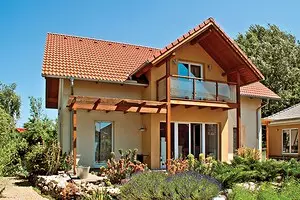
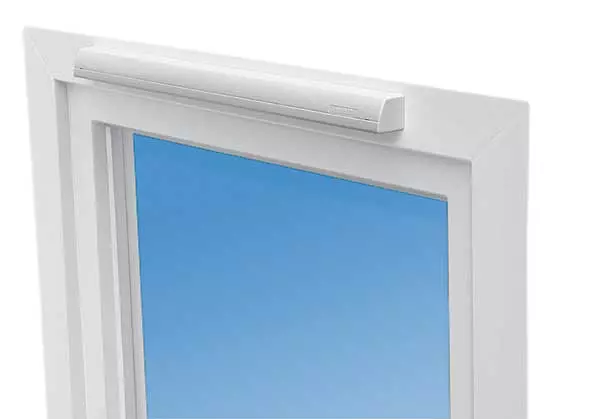
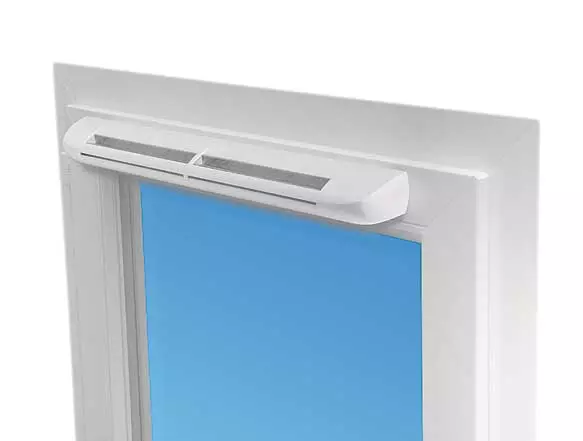
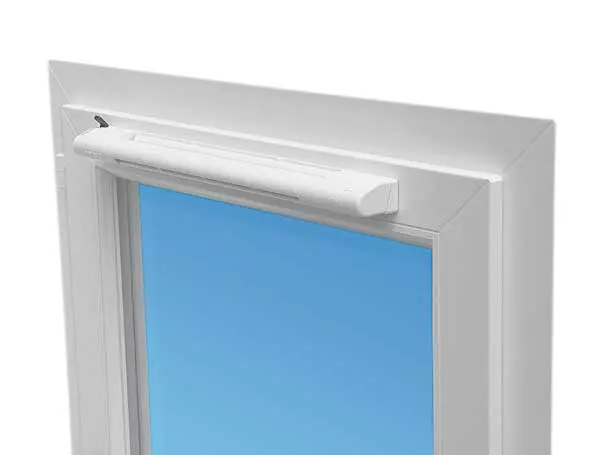
Protective outer visor AS (a) and window supply devices EHA2 (b) and EMM (B) (all - Aereco)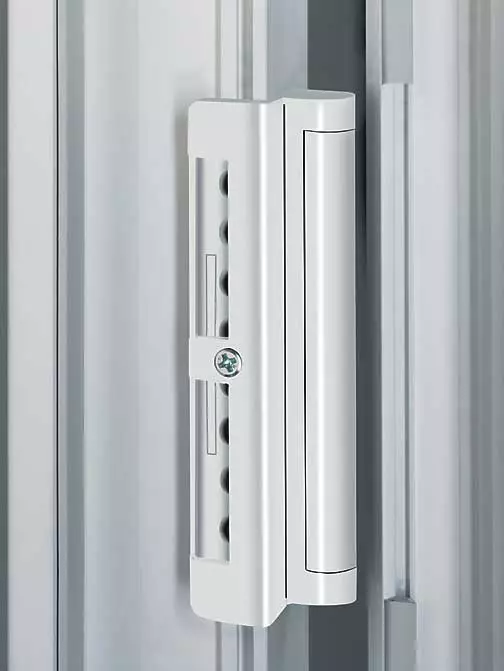
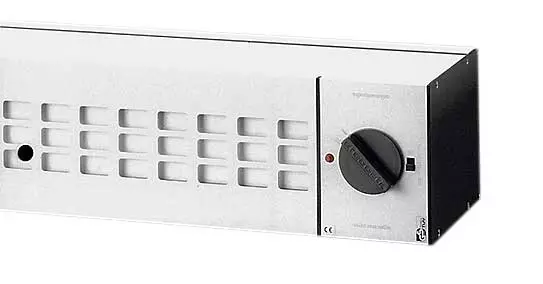
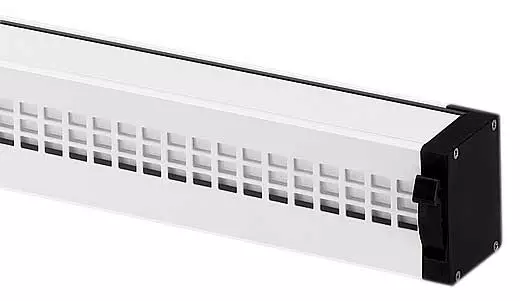
Using electric "craving" window air ventilator Aeromat 150 (Siegenia-Aubi) (a) can work both on air flow and hood. If there are two windows in the room by installing Aeromat 150 in each of them, you can solve the problem of venting into this room. Aeromat 80 (b) works on a natural "pull" and therefore can only provide the influx of fresh air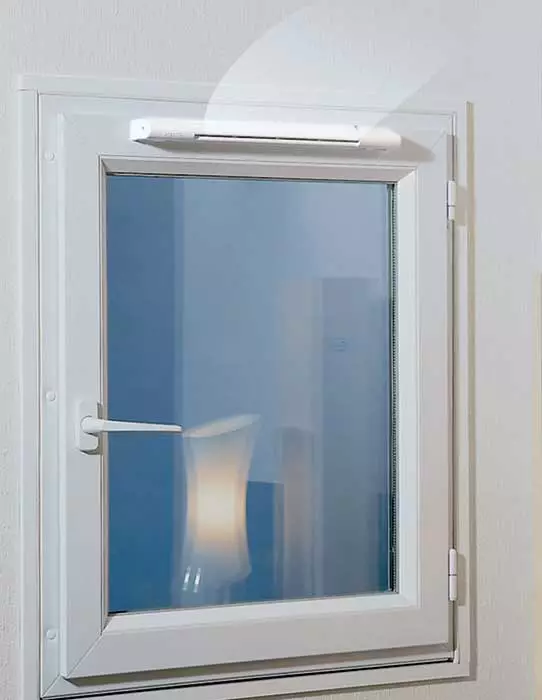
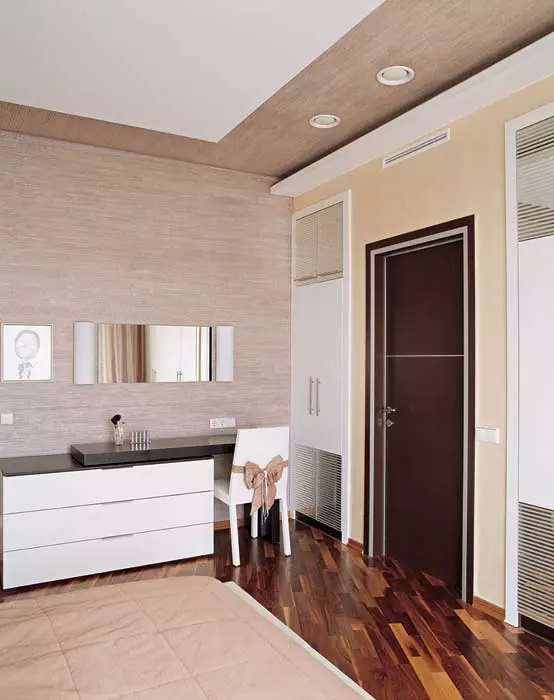
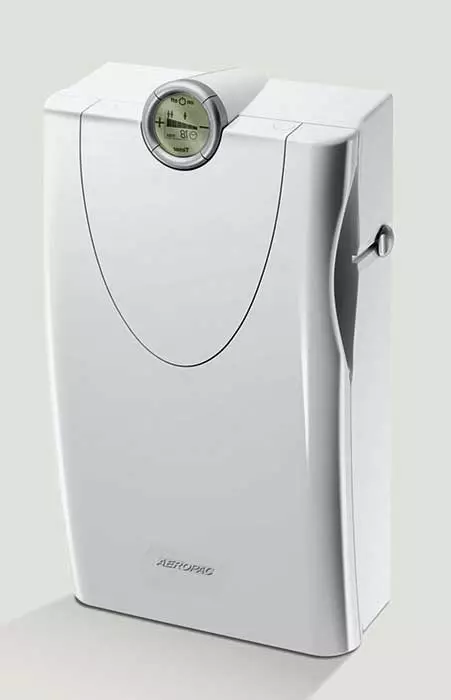
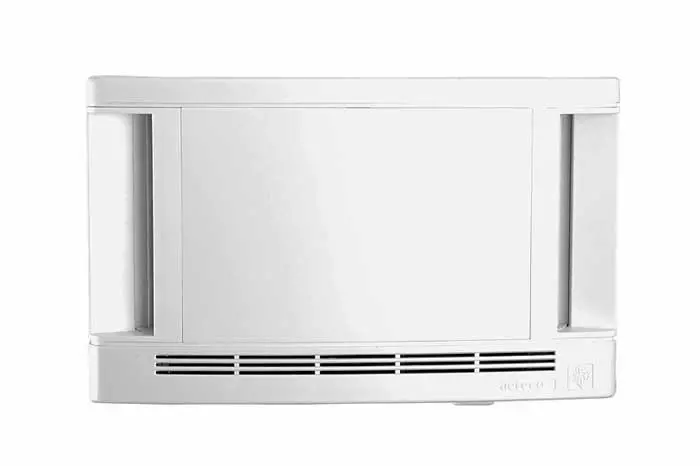
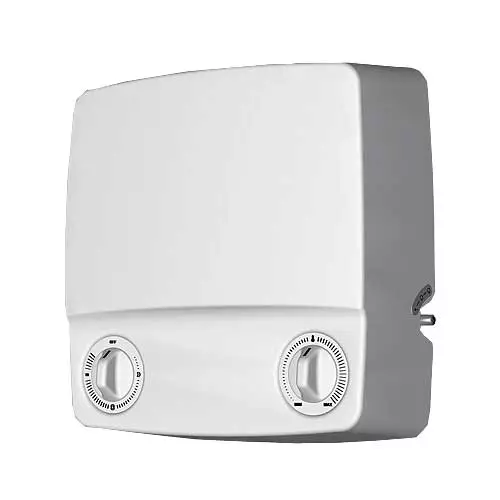
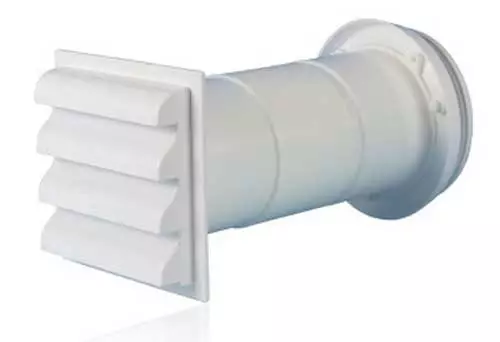
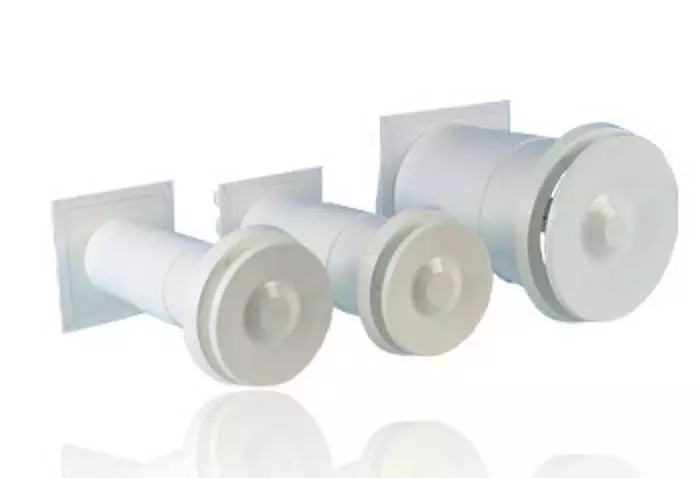
Wall supply valves: EHT (AERECO) (A), Marta (2 VV) (b), VTK 80 (B), VTK 100 (g), VTK 160 (d) (SystemAir)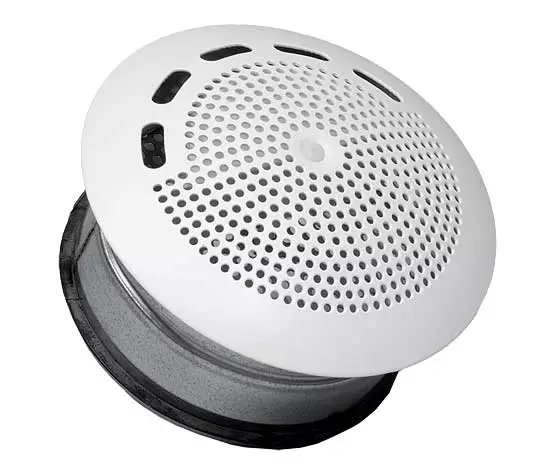
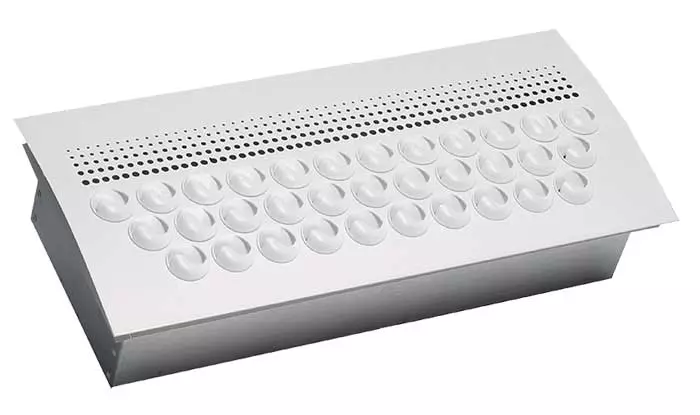
Ventilation valves (a) and lattices (b) for cutting into the wall when organizing the air flow system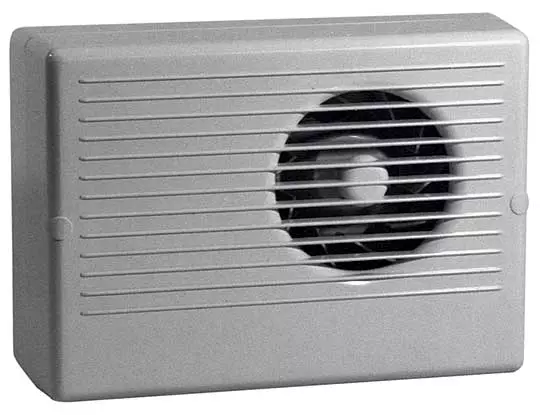
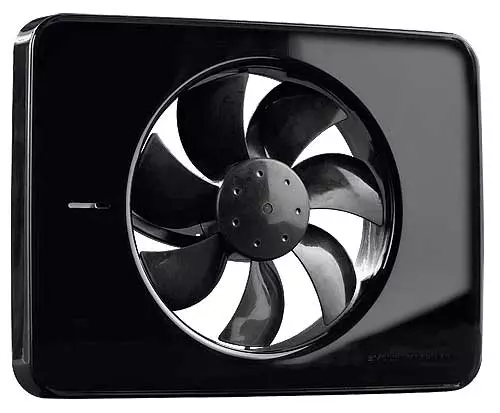
Fans to install at the entrance to the ventilation channel from the room side: CBF (SYSTEMAIR), Fresh Intellivent (Fresh) (b)
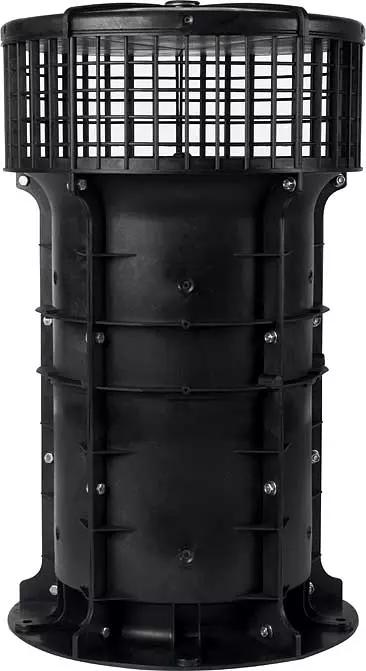
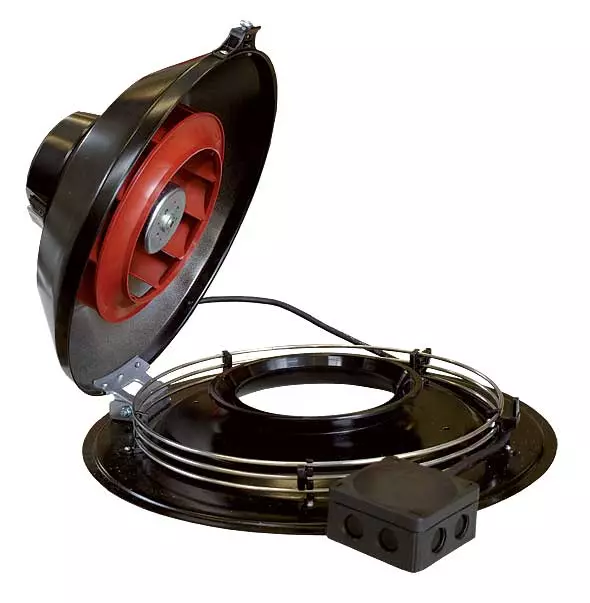
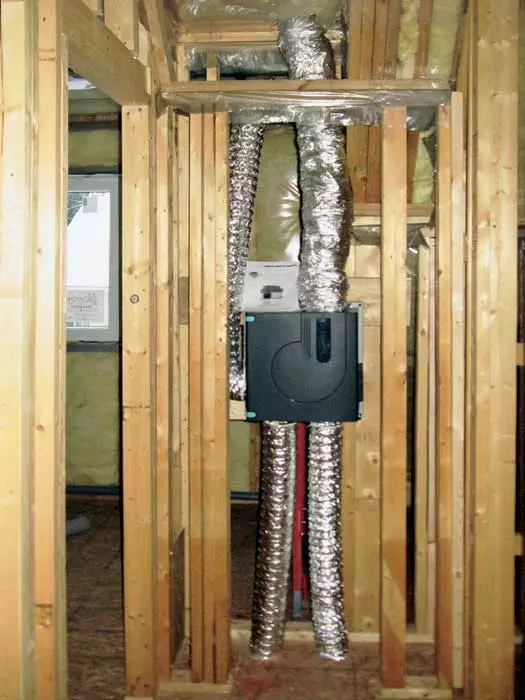
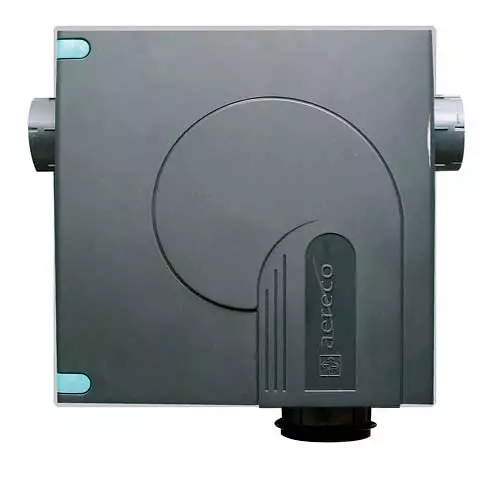
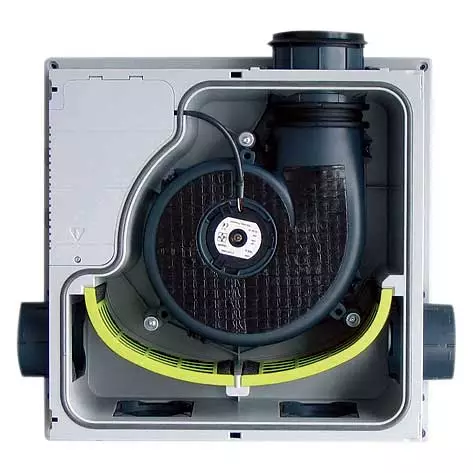
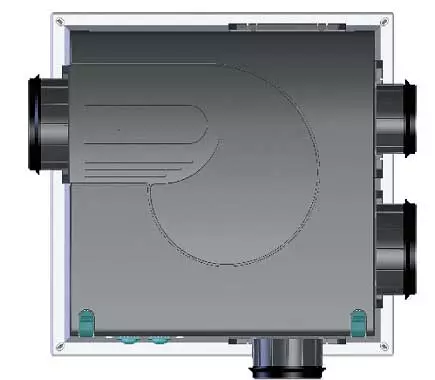
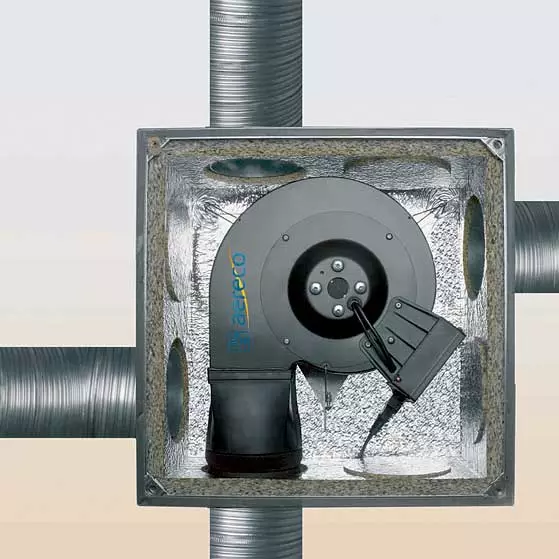
Fans for the organization of forced exhaust immediately from several rooms with air emissions in one Ventkanal are offered in three versions: V2A - for two rooms (A, B), V4A - for three or four rooms (B), VAM - for five to six rooms ( d)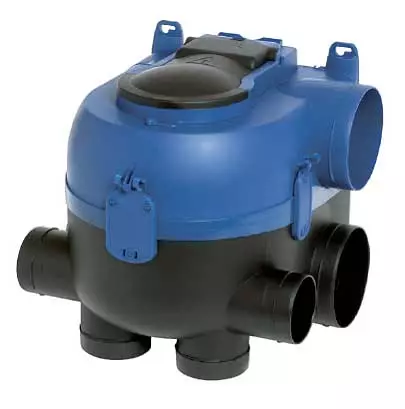
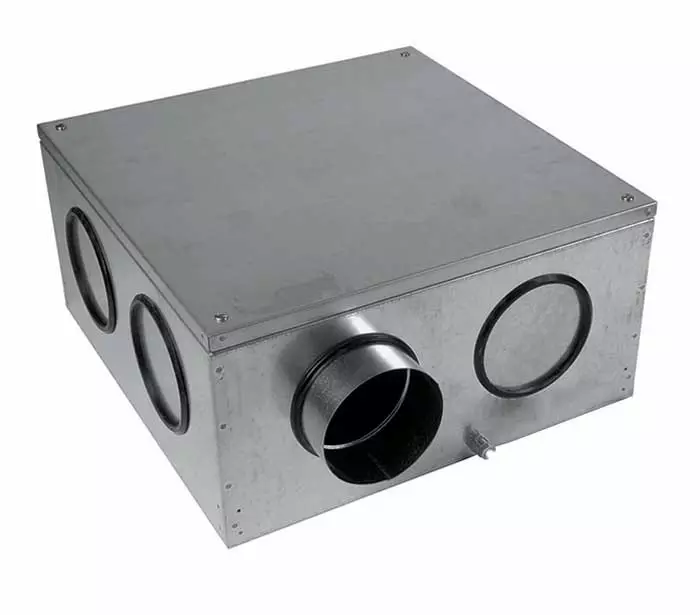
Models of fans are offered for six rooms, which can be installed either in the attic, for example, VPH2 (A), or inside the house - such as VAM (b)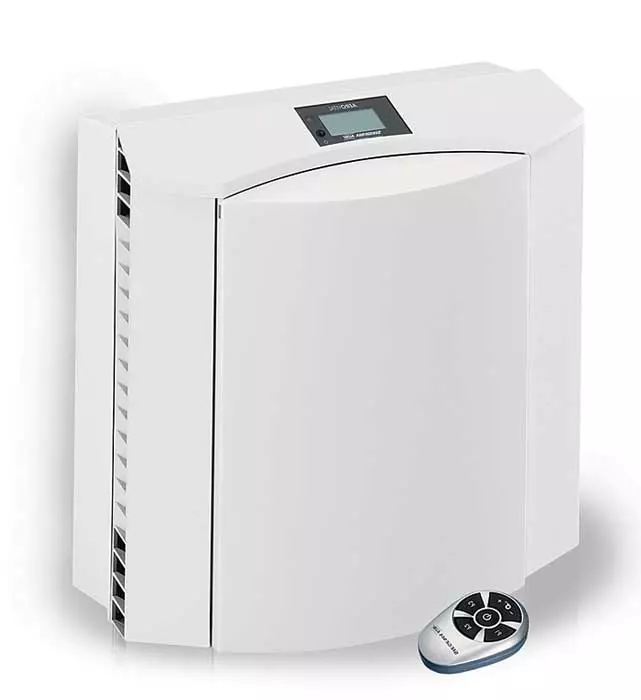
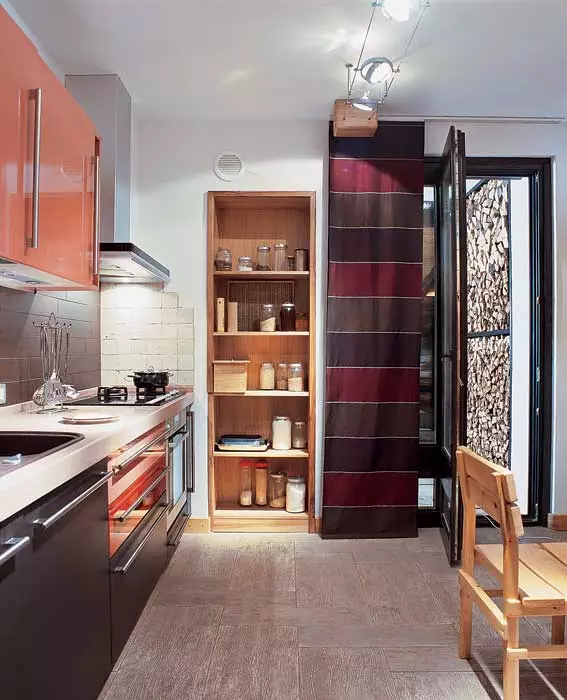
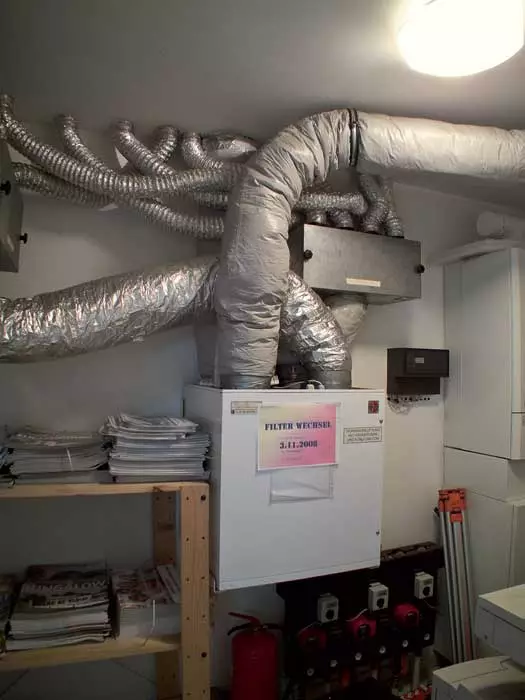
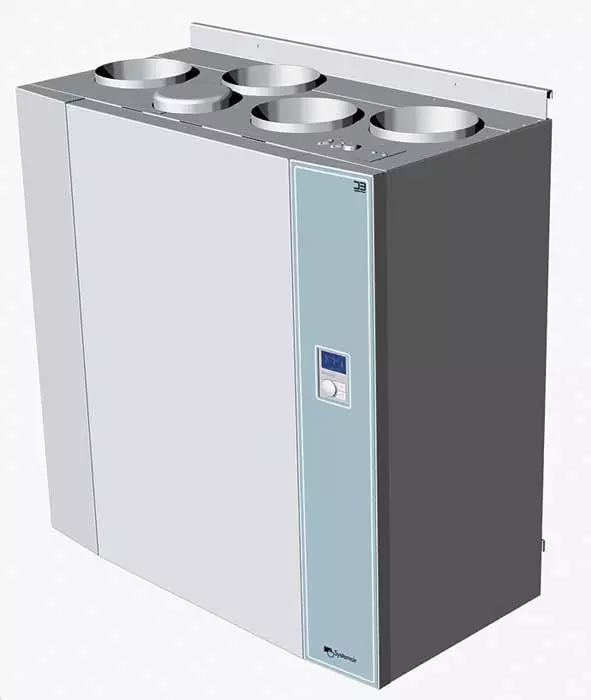
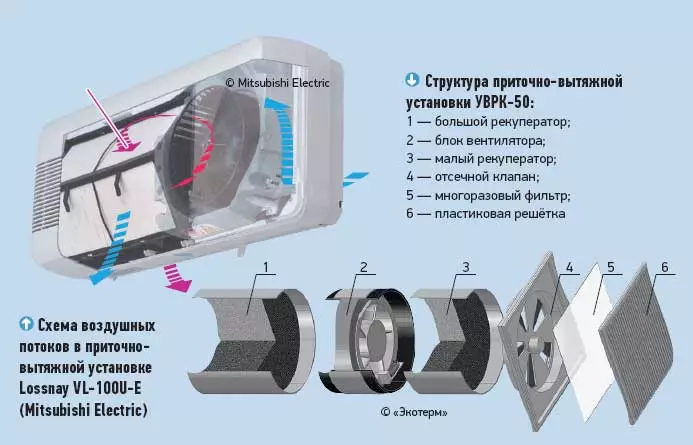
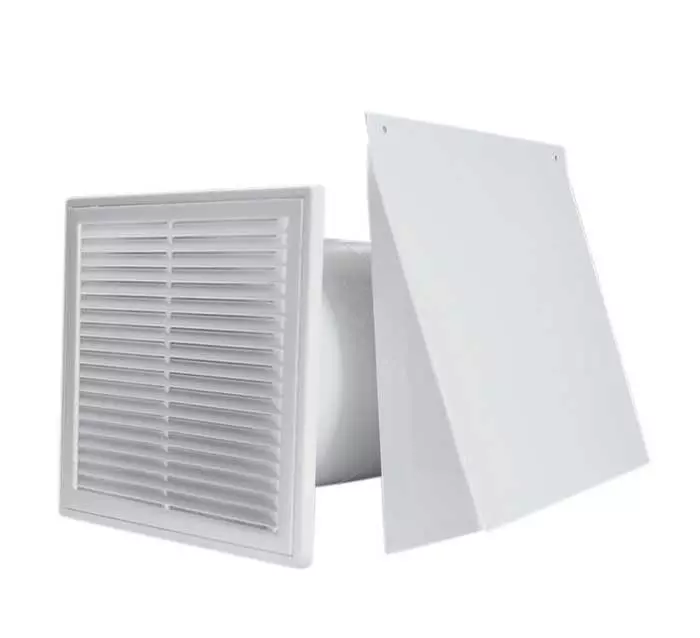
What if the system of natural ventilation is available in the house acts out of the hands bad? The article proposed to your attention will tell about devices that allow such a system to work, turning it into forced. and install equipment can be installed after you drove into the house
Europeans and Americans tend to equip their carcass dwellings with energy-saving forced systems of supply and exhaust ventilation, often combined with heating and air conditioning systems. The Russian consumer is still categorically refused to install air heating systems and forced ventilation. As a result, builders arrange only a natural hood in a new home and in this form hand over to the customer. That is just the replacement of forced inflows and hoods of the natural hood is not always equivalent.
To take for writing this article forced the situation with which, unfortunately, it was repeatedly faced by visiting construction sites. Imagine the sales office of the country village under construction, that is, an exemplary house, which developers erected to attract buyers. I go inside - the windows are open on the first floor and therefore it breathes normally. Raise to the second floor and after a couple of minutes I understand it - there is nothing to breathe here! I descend and ask if there is ventilation in the house. Of course, there are air ducts of a natural hood system located in the kitchen and bathroom located on the first floor. To the question why on the second floor there is such a stupid, I get a response that literally turns into shock: "Yes, who knows him ... Our visitors look at mostly, and we climb very rarely!"
Duchot - not for the mind
Each of us, undoubtedly, noticed that the head begins to hurt towards the end of the day and it becomes harder to figure out. Many people wake up in the morning, feeling fatigue instead of cheerfulness, besides accompanying dizziness. The reason and the other is primarily the bad operation of the ventilation system. This leads to an increase in humidity, an increase in the content in the air of CO2 and other not too useful impurities and, as a result, to the lack of oxygen, the vital for nutrition of the brain. Only in properly ventilated premises a person can feel good. The fresh air in your home (in particular, in the bedroom), the better you will rest overnight, and therefore your performance will be higher during the day. Therefore, it is very important that in each building it is provided by controlled, silent, and if possible, energy-saving ventilation.About natural ventilation
The natural ventilation system of the private house Russian designers in most cases are arranged in the image and likeness of urban high-rise buildings, placing the drawers of the hood in the kitchens and bathrooms. However, no one remembers that in a multi-storey building, the inhabitants of the last floor, as a rule, are discomfort due to poor operation of this system. The reason is simple: already on the penultimate floor, the distance from the inlet openings located in the apartment to the top of the exhaust pipe does not exceed 5-6m, and on the last it is even less. A results in this pipe simply does not arise the necessary "thrust". In the same way, the case is also in the country house, so the system of natural exhaust at best works badly, and at worst it does not work at all. Moreover, under certain conditions, such as cooling the mouth of the ventilation miner, the air density increases in its "trunk", which leads to the "tipping" of circulation, and the exhaust pipe begins to tighten the air from the street to the house.
Nobody thinks the standpoint air inflow. Ito, unfortunately, it became natural - the current regulatory documentation it is envisaged that the inflow of fresh air into the premises should be carried out through the looseness of window structures. That is, virtually legalized that the windows should have the gaps needed to organize the inflow. It is clear that no respected developer will install such windows in a new house, but will put light, beautiful and warm designs with double-glazed windows and seals. It is the most completely deprived of the future tenants of the house of a permanent inflow of fresh air.
From that that in the residential room it is necessary to arrange a system of the flow, that is, an organized flowing through the house received inward (for example, through an open hand) of fresh air from the place of his inflow to the exhaust, they are generally trying not to remember. What kind of master will voluntarily cut it, as required by the norm, at least one with such a difficulty selected interroom door or to embed the ventilation grille into it? And correctly, which does not allow. If there is no permanent tributary, and the extractor does not work as it should, there is no need to spoil the doors. True, as a result, returning even after a brief ability, the tenants begin to run around the house, opening the shutters of the windows and the door to at least somehow air the premises. Aspifully, a building once again goes around the building to close everything that was previously discovered.
Is it possible to do without this running? Of course have. In order for the building to be calmly and deeply breathe at any time of the day throughout the year, it should normally function the ventilation system that keeps on three whales. This is a constant influx of fresh air in the volume provided by the norms, its streaming around the house and extractor, which provides "emissions" of air in a volume equal to the influx. Next, we will consider in more detail the devices that allow you to organize all three of the above-mentioned process.
How to organize an influx?
Provide a permanent influx of fresh air in the premises are designed special supply devices - valves. They are divided into two types - window and walls.Window supply valves are mounted mainly at the top of the window. They provide air flow in the amount of 5-50m3 / h. Wall supply devices guarantee the same or even a slightly larch, but they are installed in the wall at an altitude of approximately 2m from the floor. In addition, the supply valves differ in terms of the level of reducing street noise. For window devices, this parameter is 33-42 dBA, and for walls - 33-52 dBA.
Choosing this or that device should also take into account the technical features of the installation. There are models of window supply valves, for whose installation you only need to promote the grooves simultaneously in the sash and frame of the window, and it will take 30 minutes. To install other models you have to change one of the glass packs, which will take much more time. To install a wall valve, special equipment is necessary, with which you can do one or two holes in the outer wall with a diameter of 75-220mm (this process can last 1-8h).
Window valves
First, consider the devices that supplies Aereco (France) to our market, from the 80s. XXV. Higher regulatory ventilation systems. The valves offered by this company are installed in the upper zone of pairing the sash window with the frame, and the sound insulation features of the window are fully saved. These devices can be mounted on windows from any materials, both at the stage of their manufacturing and on the already installed (without replacement of the glass). Maintenance is not required - it is enough to clean the valves from dust 1 time per year. If the valves are equipped with an ordinary visor, the level of street noise will decline not more than 37DB, if special acoustic is 37-42 dBA. Aereco devices are simplified by EMM, EHA and EHA2 models.
Emm valve has a simple and reliable design. It serves a stream of air up at an angle of 45 or 60. Located on the housing, the switch allows you to manually change the feeding mode and install instead of the usual (about 35m3 / h) minimum (5m3 / h), which can be done in winter. Price - 1400rub. The EHA model differs from the previous enlarged cross section for air pass (40 cm2) and improved sound-absorbing characteristics. Price - 1700 rub.
EHA2 devices are more perfect. Unich stylish design, and the front panel can be painted in the color of the window profile. The valve is no longer working in two, but in three modes: "covered" - provides a minimum air flow 5, 11 or 17m3 / h (depending on the modification of the device); "Hygrosculation Mode" - the supply capacity adjusts the built-in automation; "Open" - guarantees the constant maximum air flow of 35m3 / h (air passage section - 3925mm2). All of them work on natural thrust (due to the difference in atmospheric pressure outside and indoors). Price - 1900rub.
On the norms of air exchange
According to the regulatory documents current today, the air exchange in the apartment and the country house must meet the following requirements:A few words about outdoor visors should be said. Their main purpose is to protect the valves and the internal elements of the window design from the penetration of rain moisture. They also perform additional functions of noise absorption and insect protection (for this purpose, an acoustic spacepank and a special lattice are installed in the visors). There are also special devices on the visors of the visors. For example, in the AC model, an inner flap is provided, which limits the air flow at the wind rushing. Thanks to this, such visors can be installed even in the windows of residential buildings of high floors.
Siegenia-Aubi valves (Germany) from the Aeromat series: Aeromat 80, Aeromat 100, Aeromat 150 and Aeromat VT series are capable of working using both natural cravings and electricity to power the electric motor, driven by a radial fan (except Aeromat 80). Devices are mounted, as a rule, in the sash by reducing the size of the glass package. They can be placed in the upper part of the window vertically or horizontally. Street noise they reduce 51 dBA.
The height of the air ventilator Aeromat 80 is only 80mm. In this case, the device has a good bandwidth - 15-30 m3 / h. The case can be painted in any color on the RAL scale. Price - 3700 rub. For 1 p. m. Aeromat 100 only 20mm above its "fellow". It allows stepped to adjust the inflow of fresh air; You can switch the mode from the feed to remove air. The device is supplied with one or two fans. The cost is 4700rub. For 1 p. m. The Aeromat 150 ventilator (height is 150 mm) is equipped with a two-stage fan with noise absorption function. The instrument allows simpler to adjust the performance and switch the mode from the tributary of the hood. Price - 5500 rub. For 1 p. m. The Aeromat VT VT 200mm height has a high bandwidth (15-60m3 / h), consumes a little energy and allows steadlessly adjust the amount of air supplied to the air. Price - 8 thousand rubles.
Wall valves
The selection of these devices is much wider than the window. Lord you can find valves that are released not only Aereco and Siegenia-Aubi, but also Systemair (Sweden), DEC (Netherlands), 2 VV (Czech Republic) IDR.
Self-regulating air valves from the VTK series (SYSTEMAIR) consist of three main parts: the outer and inner headings and the duct passing in the wall in the wall (calculated on the walls with a thickness of 270mm), inside the replacement air filter. Product products of three sizes: with a "tube" with a diameter of 80mm (VTK 80), 100mm (VTK 100) and 160mm (VTK 160). The device can work both automatically and in manual mode. For the case, the position on the air path is adjusted by the thermostat that responds to the outdoor temperature. When the temperature reaches the lower limit (-5 c), the automation slams the valve, and when the top level is exceeded (+10 s) - fully opens it. Manually mode the thermostat is disabled, and the flow control occurs when the "plate" of the inner head is rotated.
The EHT wall valve also offers Aereco. Like all products of this manufacturer, it is hygrorgulated. Involving it will be required to purchase an air duct with a diameter of 100 or 125mm, an acoustic spacer and an acoustic visor with an insect lattice. The device has a operating mode switch that allows you to set the minimum flow rate - 5m3 / h (maximum flow rate - 40m3 / h), as well as an automatic air flow limiter with strong wind gusts.
The Marta 2 Implise system provides an opportunity not only to adjust the volume of the supply air, but also filter, as well as to warm it up. The latter is happening both by mixing with the exhaust air (the ratio of fresh and exhaust air is adjustable) and by electrically heating. A two-stage filter (coal used in one of the steps) not only delays dust weighted in the street, but also partially absorbs odors. The device is calculated for maximum performance 120m3 / h, but allows you to select one of the three modes of operation (adjusting the speed of rotation of the fan speed).
The Sonair A + (DEC) supply system as a whole is similar to the previous one, but its maximum capacity is 190m3 / h. The installation can operate in three modes: in the warm season - "Fresh air flow with filtration"; In the cool season - "air flow with filtering and heating" (due to mixing it with warm room air); In the cold period - "Recycling of room air with a partial influx of fresh air and its filtration." Electrically heated supply air is absent. The volume of the supply air is set using the fan rotation regulator. Cleaning the supply air provides a deep filter (class G2) or thin cleaning (class F6), which allows you to capture even smells.
The Aeropac device (Siegenia-Aubi) is designed for maximum performance 170m3 / h. The incoming air is purified by an active coal filter, as well as a filter of class F5 or G3. The level of reducing street noise is at least 50 dBA. The device is equipped with an LCD display and a push-button panel. The mode of operation and the signal of the need to replace the filter are displayed on the display. Aeropac consumes only 8W.
How to provide a break?
To organize a free flow of air flow through the house from the supply devices to exhaust valves, it is not necessary to trim the interior doors or mount the ventilation lattices in them, as required long-standing slips. You just need to gently drill in the inner partitions of the holes of the required diameter and install in them specially intended for this plate valves or cover the resulting lumets with vents. It is also necessary to pick up so that they fit the interior design.How to make the exhaust work?
Make a natural hood work in several ways. One of the options is to install fans at the mouth of Ventscanals located in the kitchen and bathrooms. The other is to supply the head with each ventilation pipe with a roofing fan. The third is to purchase a special exhaust device that will take air immediately from several rooms and "push" it into an existing ventka. Consider each of the features in more detail.
Opinion of a specialist
Aereco equips its products with sensors-drives from a special polyamide moisture sensitive tissue. They react to an increase in relative humidity indoors and without power supply automatically control the flaps installed in the valves, changing air flow. Why is the humidity as the parameter to which these devices react? The answer is simple. Increased humidity is the result of human life (breathing, washing dishes, shower, cooking IT.P.), and therefore, the humidity indicator is higher in those rooms in which people are currently being. You switched from the living room into the kitchen and put the kettle on the slate - with the humidity increased and the ventilation devices installed in the kitchen began to skip a little more air. They went with the kettle back to the living room - the valves are activated there, and the kitchen, carrying the room, gradually cover their flaps. Anocient, these simple devices will ensure the maximum air flow in those rooms, where you sleep and your children, and reduce its entry into the living room and the kitchen. Please note: we used the term "will reduce", and not "stop". This means that all the premises in the afternoon and at night continue to be ventilated, but slightly less intense than those in which you are.Boris Buttsev, Head of the Technical Department of the representative office of Aereco in Russia
Internal fans
The simplest and most small, but, unfortunately, is far from the best way to solve the hood problem - set the fan in the entrance to the ventilation channel. There are many such devices on the market, but experts advise preference to models of well-known manufacturers who have proven reliability by their products. At the same time, low-noise products should be chosen, which are designed for long-term continuous operation, have low power consumption and are equipped with a check valve.
For example, a good fan model offers Systemair. The CBF100LT fan produced by it, calculated on the maximum air flow 105m3 / h, consumes only 30W. The level of own noise does not exceed 52 dBA. Price - from 2400 rub.
Original Fresh Intellive fans equipped with hygrometers and bathrooms and other premises, supplies Fresh (Sweden) to our market. Thanks to the adapter embedded in the device, the manufacturer got the opportunity to use a low voltage motor with a service life of 60 thousand h (3-5 times longer than that of a conventional fan), which consumes only 5W. The engine is equipped with very quiet bearings (noise level - 22 dBA). It is provided for automatic humidity control, thanks to which the fan itself determines when it should turn on and how much time to work. The device is also equipped with a built-in timer, allowing you to set the shutdown delay time (5, 15 or 30 minutes). The "smart" control system controls the fan performance when the timer is turned on: if the humidity is small, the device operates at a low speed, and if high is moving to maximum turns (132m3 / h). If the fan has not functioned more than 16 hours, it automatically turns on and for 1 h replete the room, which eliminates the problem of stagnation of air. The device has three light indicators of the processes performed: blue - in high humidity mode, yellow - when working timer, purple - when you turn on a fully automatic ventilation function. The warranty is 5 years. Price - from 7700 rub.
Roofing fans
When choosing a roofing fan, you should give preference to models designed to improve the work of natural ventilation systems (do not be surprised - there are such devices on the market), low noise, with low power consumption. Consider for example two such devices.Roofing fans from the TFSR series (SystemAir) are specifically designed for private apartment buildings. The company offers 12 models providing performance in the range of 310-1516m3 / h. The level of own noise of devices is 31-55 dBA. Power consumption - 25-307W. Weight - 2.5-7kg. For the convenience of inspection and maintenance, the engine is placed on a folding lid of the device. It is equipped with built-in thermal contacts protecting overheating. The fan speed can be controlled by a thyristor regulator. Price - 7600-16500 rub.
The Low Pressure Fan VBP (Aereco) was created to improve the operation of natural ventilation systems. True, it is intended mainly for installation on the roofs of multi-storey buildings, but nothing prevents from using it and on the roof of a single-friendly residential building. The fan blades are located in parallel with airflow, and not perpendicular to, as usual, and due to this, the resistance of the air movement is significantly reduced. In addition, at any time of the year, the fan prevents the occurrence of reverse thrust. The device is equipped with an engine with improved characteristics having low power consumption. The electronic unit is denoted by the fan, which takes into account the outdoor air temperature and wind speed. Performance - up to 400m3 / h. Power consumption - 9-12W. The level of own noise is 26 dBA. Price - 28 400rub.
Fans for multiple rooms
Such fans manufactured by Aereco are designed exclusively for use in residential buildings. Their characteristic signs are as follows: they are designed for permanent work and at the same time they are able to automatically switch from one mode to another. The same fans have several inlets to which flexible air ducts with a diameter of 100 or 125mm, which go to the premises are connected. The only outlet with an air duct is connected to an existing natural exhaust channel. These fans are mounted in subtense niches, wall cabinets or utility rooms. The entire model range is distinguished by reliability, low levels of own noise (not more than 33 dBA) and minimal power consumption (5-44W). Warranty period - 2 years. The following models are presented to Vlinike Fans: V2A - for two rooms (price - 14 thousand rubles); V4a - for four rooms (20 thousand rubles); VAM - for six rooms (27 thousand rubles) and VPH2 - also for six premises, but it is possible to install it in the attic (11 thousand rubles).
It should be borne in mind that these aggregates work only in a pair with hygroregulated exhaust devices - lattices installed at the entrance to the ventilation channel in the kitchen, bathroom, toilet IT.D. In addition to the lattice humidity sensor, it can be equipped with motion sensors, CO2, volatile organic compounds IT.P. Having found within its own action of a person or a dangerous concentration of CO2, the device itself opens the damper mounted into it and thus gives the fan to go to the maximum speed. If several exhaust grilles are connected to the fan, it, pumping the specified air, defined by the design or setting when installed, will distribute it in proportion to the degree of openness of the flaps in each of the devices. Aestley tenants do not have a home or a bathroom for a long time, which are in the gigometers lattices will begin to cover the damper connected to them. As soon as the flaps in all lattices are covered, the fan will automatically reduce the amount of air removed, occurring thermal energy, but does not stop working completely. Hygrorgulate grilles can be powered by batteries (batteries) by voltage 9V or connect to special terminals on the fan housing. There are several lattice models: BXS - for bathrooms, BXL - for the kitchen, BXC is universal.
Devices "2 in 1"
Installation of supply and flow devices and installation of exhaust fans are really able to establish the operation of the ventilation system in the house, turning it out of natural into forced. However, in winter, such a system will simply throw out a rather significant amount of heated air into the atmosphere, and as a result, cold air from the street will come to his place. This will lead to an increase in the cost of heating at home. Is it possible to do without such additional costs?It turns out, it is possible. To do this, it is proposed to use the so-called compact ventilation devices equipped with a recuperator. They provide both the influx of fresh air and the removal of spent. Moreover, the heat of the latter in the recovery is transmitted to air flowing from the street. The equipment used for this can be divided into two groups. Forward the devices of significant dimensions made without using any design solutions. They are installed in the utility premises or in the attic, if it is in the house. The contracting and exhaust air ducts are connected, which are bred by the rooms and "admit" in them, drumped holes in walls or ceilings. Our market presents a wide range of devices issued and foreign, and domestic producers. But with all its advantages, such recuperators have one significant disadvantage in the aspect of the topic under consideration: they are better to mount them at the construction stage or with overhaul buildings. An attempt to establish them in the already decorated house is likely to make not even a cosmetic, but to repair at least medium scale. Therefore, we will not consider the first group of devices here and go to the second. Knei includes compact devices mounted in the walls. They are published not only foreign firms, among which Siegenia-Aubi or Mitsubishi Electric (Japan), but also domestic, such as Ecoterm.
Siegenia-Aubi offers three ventilators at once - AeroLife, Aeroplus, Aerovital. The first due to the low level of its own noise is well suited for bedrooms and children's rooms. It has two levels of control of the volume of the transmitted air, is equipped with a plug-in synthetic filter. The device is equipped with a recuperator that does not form condensate.
The Aeroplus ventilator using sensors analyzes the level of humidity and temperature in the room and, depending on these parameters, doses the inflow of fresh air. The bandwidth of the device can be controlled and manually swing the fan to the desired stage. Moisture condensing during the operation of the recuperator is displayed in the air intake pipe. The ventilator feeds from the voltage of 12V and works in energy-saving mode.
Another device is Aerovital - equipped with a filter protecting against pollen (the effectiveness of its work is confirmed by clinical trials). The device has ten steps of regulation, and control them using an infrared remote control. The ventilator has a function of recovery, reaching 70%, and the condensate is not formed. Mitsubishi Electric also represents two supply and exhaust installations for domestic use from the Lossnay series. The VL-100U-E model is very similar to the inner block of the split system. Air is supplied and emitted through two holes drilled in the wall with a diameter of 75mm. Air flow can be adjusted stepwise (65 or 105 m3 / h). Thanks to the use of a special recovery of a special design and the materials used (know-how), the system is capable of not only cool, but also to dry the dying air, and in winter - heated and moisturize it. It makes it mainly due to the drawn air. The device is equipped with two EU-3 air filters (one - on the feed, the second - on the exhaust) and the noise suppression system in the supply air channel. It would be a heat exchange element to reach 10 years.
Installation LGH-40ES is different from the previous greater productivity (air flow - 250-400m3 / h) and the installation method - it is mounted horizontally under the ceiling (the height of the device is 255mm). The device is supplied with two EU-3 filters. The operating range of external temperatures is -10 ... + 46 C.
Inaccination, URCS-50 ventilation device ("Ecoterm"). This device is similar to the previously described wall ventiors: it is made in the form of a pipe segment with a diameter of 200mm and a length of 400mm (inside it and the entire "filling") with two gloves is hidden. The difference lies in the fact that UTIRC-50 supplies not only fresh and clean to the house, but also heated (about +14 oC during frost -43 oC) air. At the same time, it consumes no more than 19W electrical power, since part of the energy for heating is obtained by heat recovery of the air of the removed air. Another difference - the device works under the scheme "Inhale - exhale". It happens like this: the fan "in exhale" throws room air into the street, and that along the way gives the heat and moisture to the regenerator heat exchanger. After a certain time, the engine switches the device to "inhale", and the street air, passing through the filter and the regenerator, cleared, heats up and moistened. The device performance is 13-80m3 / h - this is enough to ventilate the room to 25m2. The level of own noise is not more than 40 dBA.
For farewell
On this, we will, perhaps, we will finish the abstortion of the racist of natural ventilation in the house. Hope everyone who worries this problem, will be able to find our article with a solution acceptable to both technical and financial point of view. Clear air!
